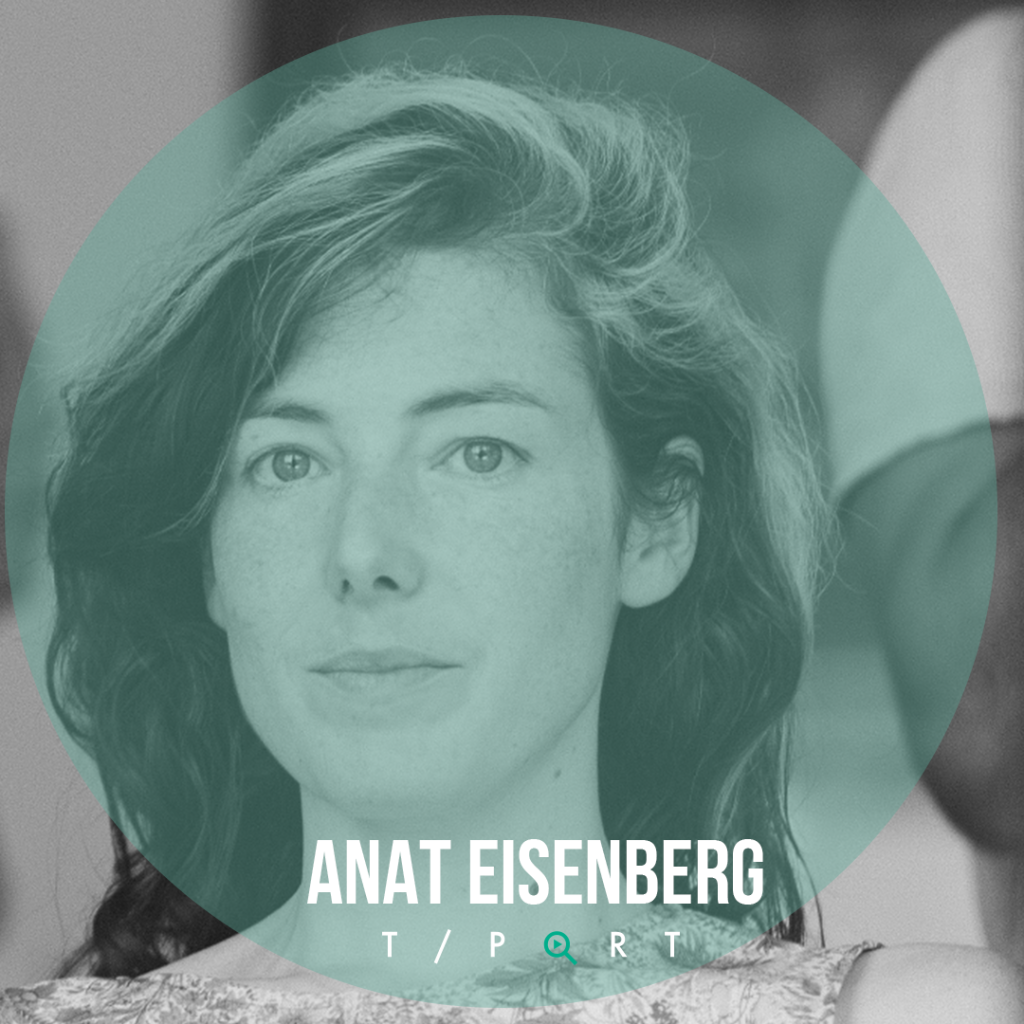 Anat Eisenberg, director of the Lighthouse-Selected short NOVY GOD, made her film shortly after becoming a mother, especially poignant as the film’s narrative was inspired by the complicated relationship between Eisenberg’s grandmother and the younger woman who cared for her.
Anat Eisenberg, director of the Lighthouse-Selected short NOVY GOD, made her film shortly after becoming a mother, especially poignant as the film’s narrative was inspired by the complicated relationship between Eisenberg’s grandmother and the younger woman who cared for her.
We caught up with the director, whose film appears on T-Port courtesy of our partners at the Gesher Multicultural Film Fund, to find out about the process of making such a personal film, her lasting creative partnerships, and how she would like people to react to her work.
Hi Anat! Would you please introduce yourself in a line or two?
My name is Anat Eisenberg, I am a Scriptwriter and Director. I’ve graduated from the Steve Tisch Film & Television school at the Tel Aviv University. NOVY GOD is my second short.
What did it feel like to find out your film had made the T-Port Lighthouse Selections? How did you react?
Proud I suppose. Grateful.
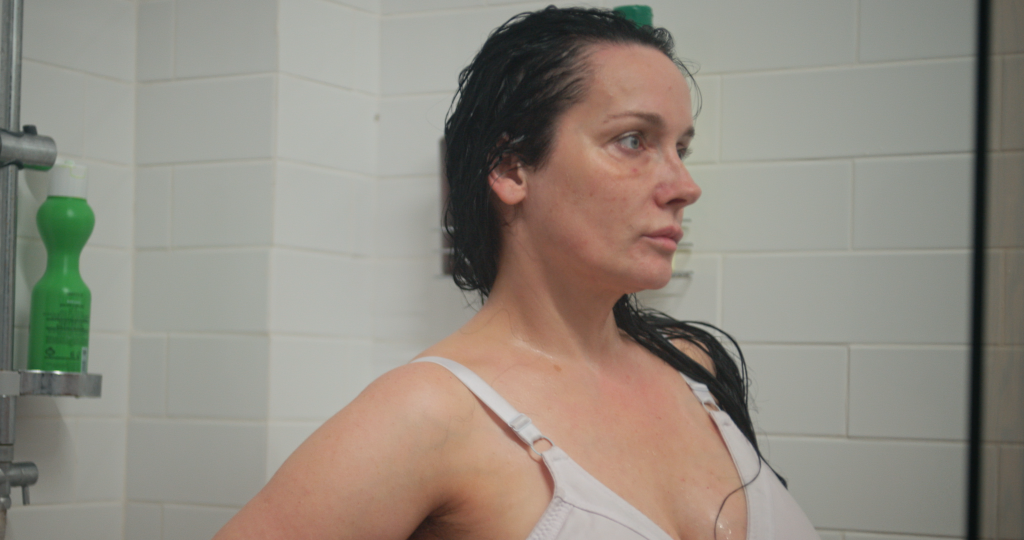
What does making the selection mean to you and your journey as a filmmaker?
The process of filmmaking is filled with struggles. Bringing a vision to life through moving images can feel miraculous when each shooting day presents unforeseen obstacles. I try to remind myself, no matter the disasters encountered, some grace shall always deliver, a miracle will save the day.
The opportunity to share these struggles and dreams with the audience reaffirms my passion, for if I follow it, the miracles shall come.
What was the inspiration behind your film?
The film intimately explores the complex bond between Nutzi, an 85-year old widow, and Galina, her Moldovan caregiver. It is inspired by my own grandmother Nutzi, who was like a mother to me.
I lived in Nutzi’s home during my high school years along with Galina, her carer. Witnessing their loving yet conflicted relationship firsthand provided the initial inspiration. Though Galina cared for Nutzi devotedly, over time her own identity became secondary, subsumed into the caregiver role. Meanwhile, my grandmother grew jealous of Galina’s youthful vibrancy. This difficult dynamic formed the inspiration to delve deeper through the film.
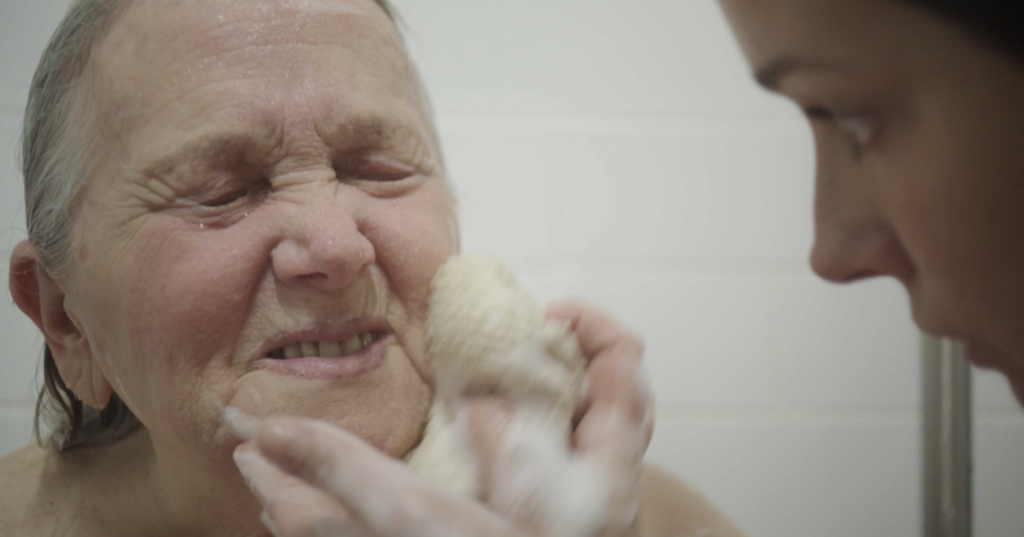
How was the filmmaking process for you? Can you tell us about how you went about the production process?
The most crucial part of the process for me was casting the roles of Nutzi and Galina in a way that authentically reflected the real women who inspired them.
Finding an actress to embody my grandmother’s mental and physical vulnerability was challenging. I had vivid memories of her idiosyncrasies and needed someone who could bring out her complexity.
For Galina, I initially searched for a non-professional actor among the Moldovan caretaker community in Israel. Meeting those women and hearing their stories was incredibly impactful. Ultimately I cast Katya Kossoy, a professional (and wonderful) actress who had past experience caring for elderly woman.
Both roles demanded a brave openness I was fortunate to find in my cast.
Having been through the process of making your short – what do you wish you had known in advance?
On my previous short, I became consumed with script, cinematography, production design – all the “usual suspects”. But I neglected to solely focus on envisioning my directorial approach separate from the chaos. This time, I insisted on carving out moments of solitude. Away from the stresses of production, I could dream up and see the movie in my mind – the mood, emotion, and vision unfettered.
When problems inevitably arose on set, I faced them with focus because of this clarity.
The time spent dreaming payed dividends when pressures mounted.
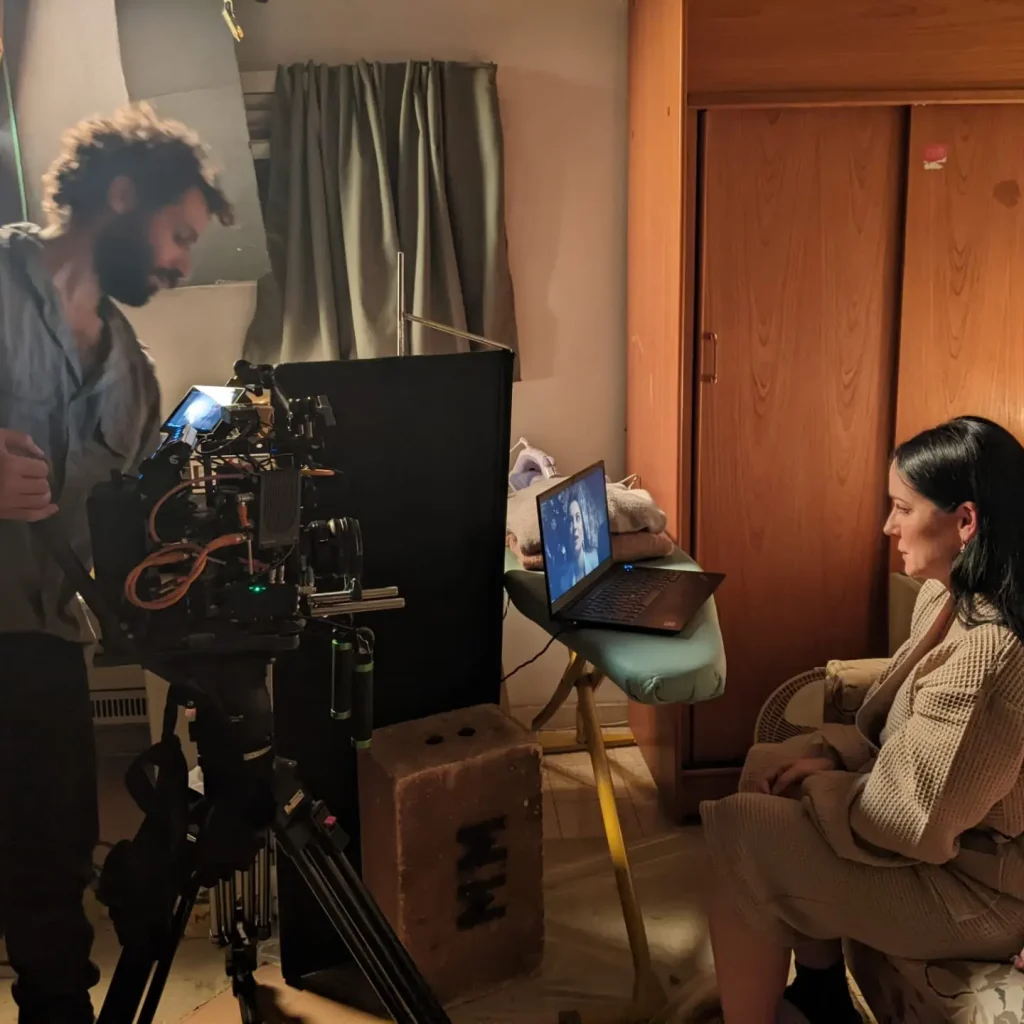
What were the biggest challenges you encountered during making your film? What did you learn from them?
I gave birth just before production started. I was torn between film and newborn. Far from a superwoman, I felt miserable, guilty, and afraid – wronging either my baby or crew. Sleepless months of anxiety followed. I’ll never make movies and babies in parallel again!!
But a less overwhelming challenge was the storm “Barbara” ambushing our first shoot day. Initially detrimental, in hindsight it gifted us time and prevented some poor calls.
Postponing the shoot granted me clearer eyes. So that extra time was a hidden blessing.
How was it to collaborate with your cast and crew? Have you formed any particular meaningful connections?
I was fortunate to form deeply meaningful creative bonds during this film. My partner-in-crime is producer Shira Daniel Hellwing, a fearless producer with a director’s sensitive eye. Shira could simultaneously see each challenge through both production and storytelling lenses – a superpower!
My other kindred spirit was production designer Ariel Herol, brimming with talent, artistry, and grace. Ariel brought such rich vision and connectivity to her aesthetic approach. Collaborating with her was a true creative symbiosis.
Tell us about the visual choices in your film. What were your main goals and techniques in creating the visual style of your film?
I had a clear vision for the visual collision of Nutzi and Galina’s disparate worlds. Nutzi’s home represents faded luxury – once full of life and aspirations, now obsolete and dense.
The mise-en-scene captures the dust and decay of her obsolete desires.
Juxtaposed is the vibrancy Galina brings through the foreignness of her experience – the Soviet-era Novy God holiday, her latent sexuality and femininity, and of course the date and the dress.
The colours and framing maintain an undercurrent of darkness hinting at the relationship’s troubles bubbling beneath. The claustrophobic frames convey the characters’ confinement.
By colliding Galina’s youthful energy with the lifeless artefacts of Nutzi’s home, the visuals embody the thematic tension between Galina’s one-time opportunity and Nutzi’s clinging on to her. This conflict plays out through the interplay of light, colour, production design, and cinematography – Galina seizing long-awaited pleasure versus Nutzi’s refusal to let go.
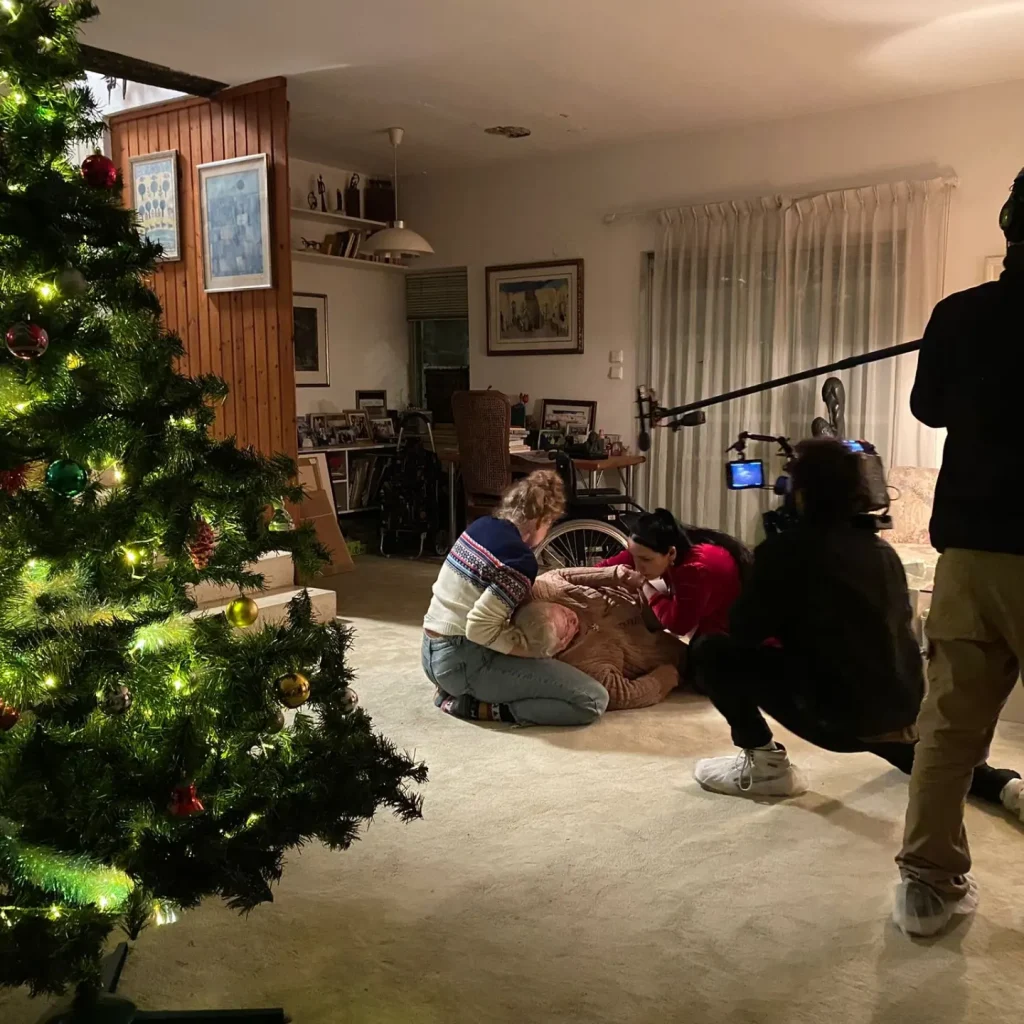
Tell us about the sound choices in your film – what type of score did you use and why? What other types of sounds did you use (if any)?
After exploring scoring directions with the film’s composer, we took a bold path – no traditional soundtrack at all.
Silence and diegetic sounds would convey the unspoken tension between the women. I wanted the audience to deeply feel the charged quiet hanging between them.
The three languages at play – Hebrew, Romanian, Ukrainian – added complexity. Often Nutzi could understand Galina and Ilona’s private banter. The silence gave space for this delicate linguistic tension.
Ultimately the absence of a score created immense power.
What would you like people to take away from your film?
I hope viewers connect with the humanity of these characters. Though fictional, they represent universal struggles we each face – longing for connection, fear of loss, the need to care and be cared for. I want to widen perspectives on the invisible struggles of women and mothers, and for hearts to feel more expansive after glimpsing this intimate female interior world.
If viewers recognize themselves in these characters, If the film evokes empathy for their own vulnerabilities, I’ll be really happy.
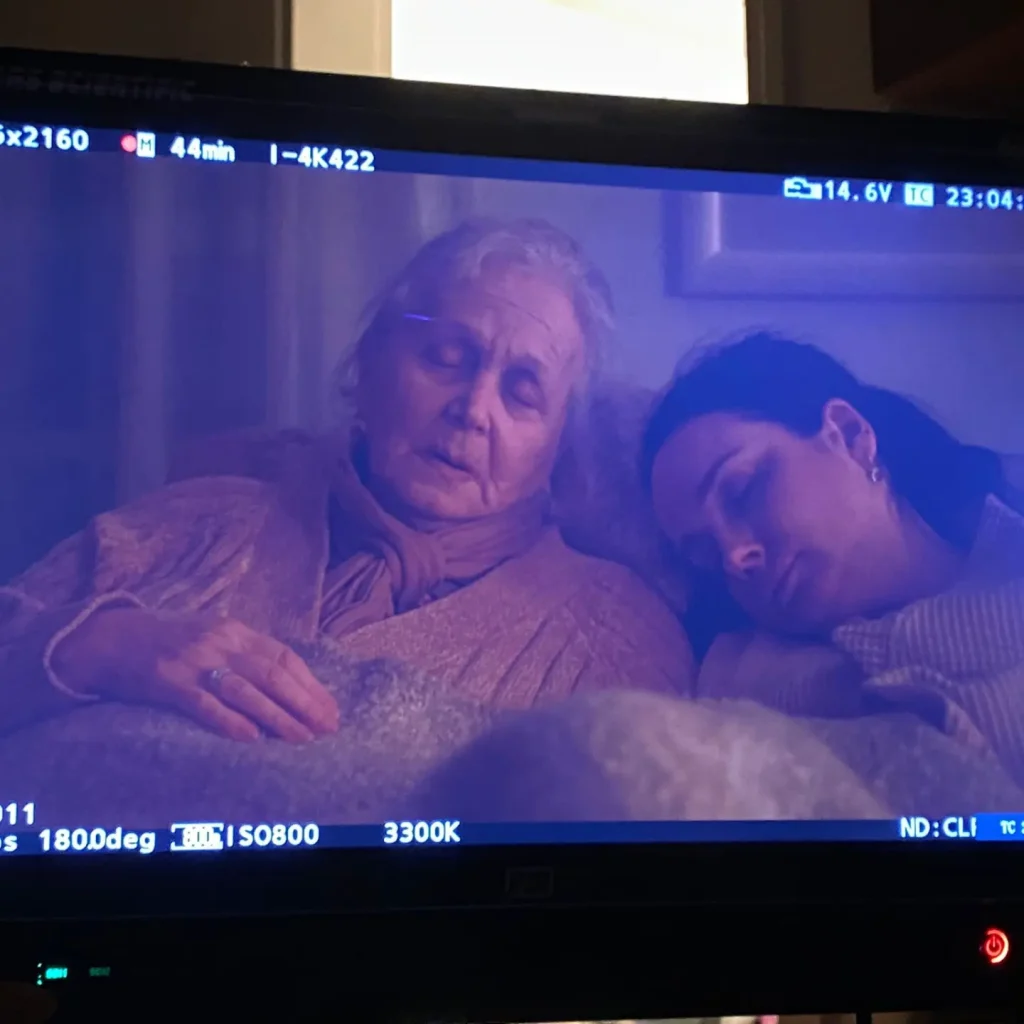
If you are a film industry professional and would like access to the catalogue and more, find out here how to sign up.
Filmmaker? Upload your short film to T-Port or sign up for our newsletter to get regular updates on the current trends and exciting innovations in the short film universe.
